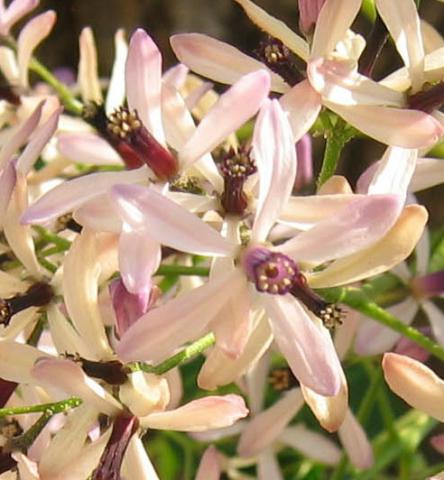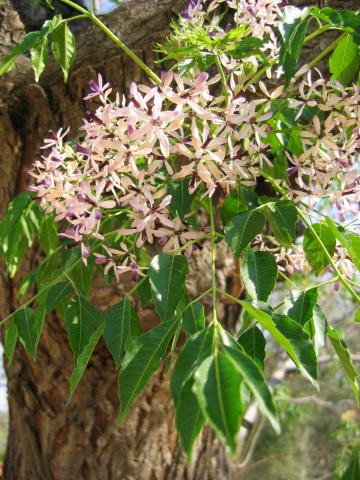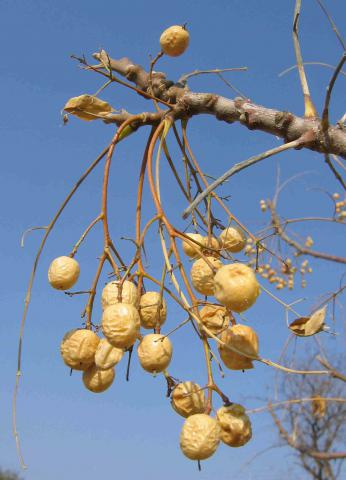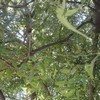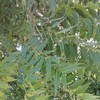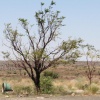Summary details for Melia azedarach
Syringa tree
Melia azedarach
Common names: Syringa tree (English); Seringboom (Afrikaans); Kapflieder, Fliederbaum (German)
Origin: Asia/India
Description
Deciduous tree up to 15 m high, occasionally taller. Trunk thick, branches spreading. Bark on young branches reddish brown, quite smooth. Leaves twice-compound, with unpaired leaflet at tip; leaflets bright green, turning yellow in autumn before falling, up to 4 cm long, oval to elliptic; margins toothed or lobed; tip tapering. Flowers mauve to pinkish with purple-maroon central column, wonderfully fragrant, carried in loose sprays near branch tips. Berry thinly fleshy, ovoid to almost spherical, smooth and bright green at first, becoming dull yellow and wrinkled when ripe, often persisting on tree after the leaves have fallen.
Distribution/Discussion
Extensively planted for shade and as an ornamental in gardens all over Namibia. Children who eat berries (which are most poisonous when ripe) show symptoms such as vomiting and profuse diarrhoea, as well as tremors and convulsions. They generally recover after treatment, although fatalities have occasionally been recorded. Toxicity varies between individual trees and areas.
» See all records of Syringa tree Melia azedarach

